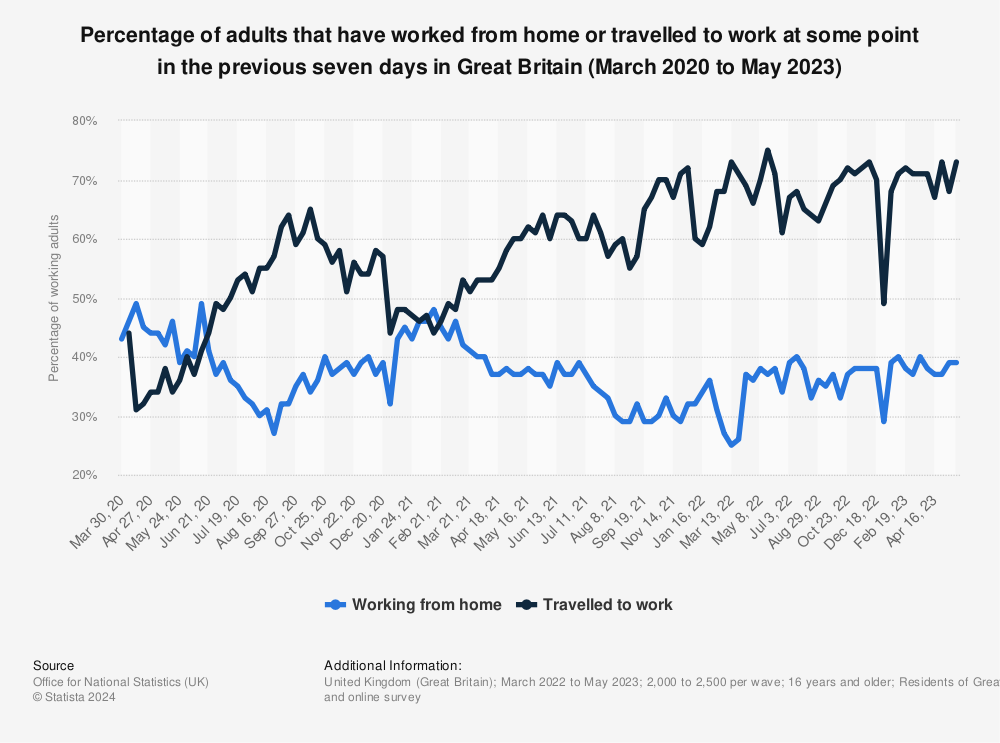

The chaos of remote working?
When many of us hear about a company engaging in remote working we often envisage chaos. Kids are one vector of chaos in any house. How can you work if young kids are, well, being kids.
If it’s not the kids, then it’s the dog!


In today’s rapidly evolving work landscape, attitudes to remote working have undergone a dramatic shift. The once-familiar routine of bustling offices and packed commutes has been replaced, for many, by the quiet hum of home offices and the convenience of video calls. Remote working, once viewed with scepticism or associated with specific industries, has now become a mainstream option, shaping attitudes and perceptions of the workforce worldwide.
Before moving on to examine the global shift to remote working let’s take a trip down memory lane to an all time classic:
A global shift to remote working
The COVID-19 pandemic acted as a catalyst, forcing businesses and employees alike to embrace remote work solutions as a means of maintaining operations and ensuring safety. While this initial shift was largely driven by necessity, it has since revealed the potential benefits of remote work, leading to a lasting change in attitudes and expectations regarding work arrangements.
According to a 2021 report by Statista, a staggering 80% of employees working at least partially remotely would recommend the arrangement to a friend. This enthusiasm highlights a shift in employee preference, with many favouring flexibility and autonomy over the traditional office environment.
In 2021, businesses gave the following reasons for why they planned to further implement home working as permanent business model (ONS):
-
- Improved staff wellbeing: 79.9%
- Reduced overheads: 49.1%
- Increased productivity: 48.3%
- Ability to recruit from a wider pool: 34.7%
- Reduced sickness levels: 27.3%
- Ability to better match jobs with skills: 17.4%
- Not sure: 5.2%
For a fuller examination of the statistics, take a look at the Forbes analysis.
The actual trends in remote working can be seen to be roughly stable over the last few years:


Find more statistics at Statista
Benefits and drawbacks of remote work: weighing the options
The rise of remote work has brought a wave of advantages and challenges, both for employees and employers, prompting evolving attitudes to remote working.
For Employees:
- Improved work-life balance: Remote work allows for greater flexibility in scheduling, enabling employees to manage personal responsibilities around work commitments, leading to a positive impact on attitudes to work-life balance.
- Increased productivity: Studies suggest that remote workers can be just as productive, if not more, than their office-based counterparts. This is often attributed to reduced distractions and the ability to work during peak performance hours, potentially leading to improved attitudes towards their work output.
- Reduced commuting costs and time: Eliminating the commute frees up time and financial resources, enhancing employee well-being and potentially allowing for relocation to more affordable locations, fostering more positive attitudes towards work.
However, remote work also presents challenges for some:
- Social isolation: Working remotely can lead to feelings of isolation and loneliness, especially for those who thrive in collaborative environments, potentially impacting attitudes towards team cohesion and overall well-being.
- Difficulty in separating work and personal life: The blurring of lines between work and personal space can lead to burnout and difficulty switching off, potentially leading to negative attitudes towards work-life balance.
- Communication and collaboration challenges: Remote teams may face difficulties in communication and collaboration compared to in-person teams, requiring additional effort to maintain clear communication channels and foster a sense of teamwork, potentially impacting attitudes towards team dynamics and collaboration.
Employers and the changing landscape
While embracing remote work can be advantageous for employers as well, several considerations must be addressed when evaluating attitudes towards remote working:
- Talent acquisition: Access to a wider pool of talent is a significant advantage, allowing employers to recruit individuals beyond geographical limitations, potentially leading to a more positive outlook on talent acquisition strategies.
- Reduced overhead costs: Lower office space requirements can lead to significant cost savings for companies, impacting attitudes towards financial efficiency.
- Increased employee satisfaction and retention: Offering a flexible work arrangement can boost employee morale and contribute to lower turnover rates, potentially leading to improved attitudes towards employee satisfaction and retention.
However, challenges also exist for employers:
- Security concerns: Ensuring data security and safeguarding company information becomes more crucial with a remote workforce, impacting attitudes towards data security and employee trust.
- Performance management and engagement: Remote management requires adapting strategies to effectively evaluate and motivate employees working outside the traditional office setting, impacting attitudes towards employee engagement and performance management.
- Maintaining company culture: Fostering a strong and cohesive company culture can be more challenging when employees are physically dispersed, impacting attitudes towards team culture and collaboration.
The rise of the hybrid model
Recognizing the benefits and challenges of both remote and office work, a hybrid model is emerging as a popular solution. This approach allows employees to split their workweek between an office setting and a remote location, offering a balance between flexibility and in-person interaction, potentially leading to more positive attitudes towards work arrangements that cater to individual preferences.
Looking forward: embracing the future of work
The future of work promises to be a dynamic landscape, continually adapting to evolving technologies, workforce preferences, and economic realities. While remote work has emerged as a significant trend, it’s crucial to remember that there’s a need for infrastructure to support the work of both management and employees. This is where Virtual First comes in.
As experts in mobile communications, telecoms, and cloud storage, we can help you plan and implement bespoke solutions to suit the precise needs of your business.
Get in touch with one of our industry experts to see how you can transform your business with technology.
